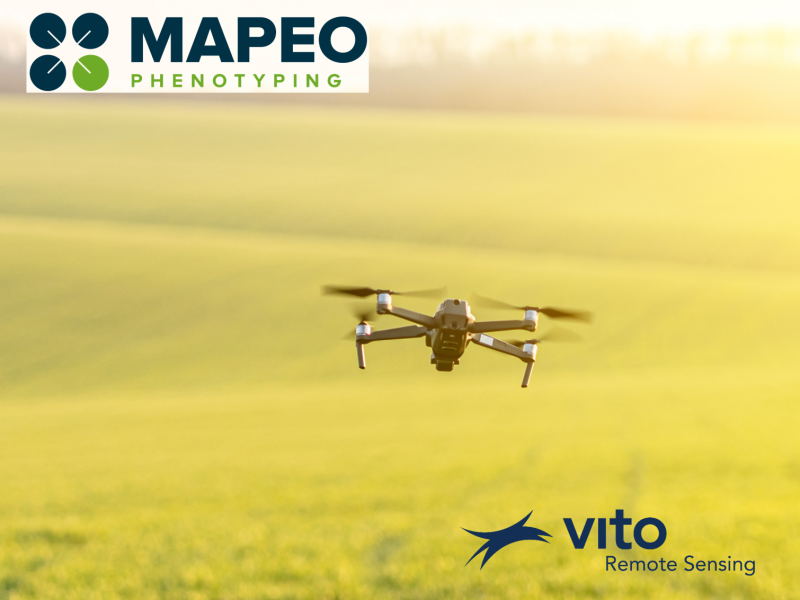Plant phenotyping, crucial for crop improvement and sustainable agriculture, has undergone a transformative shift with the integration of drones. This article explores the benefits of drone-based phenotyping, spotlighting an innovative approach that considerably reduces data acquisition cost. VITO's cost-effective solution democratizes drone acquisition for phenotyping, revolutionizing agricultural research.
Introduction:
Plant phenotyping is pivotal in agricultural research for understanding plant traits, genetic variations, and responses to environmental conditions. Drone technology has revolutionized phenotyping, offering faster and more objective measurements. There is a clear trend towards very high resolution imagery (mm to even sub-mm detail) which can identify specific plant traits like disease spots, flowers or fruits. But current drone mapping technology is not well adapted to cover experimental fields in that much detail. This article delves into a new drone-based technique, focusing on VITO's cost-effective & scalable approach.
Advantages of Drone-Based Phenotyping:
1. Rapid and Objective Measurements: Drones equipped with high-resolution cameras provide swift data collection over large fields, offering objective measurements of plant traits like height, leaf area, vigor, and disease resistance.
2. Enhanced Genotype Evaluation: Efficient comparison of plant traits across various genetic backgrounds accelerates crop improvement and yield gains.
The Classical Approach: Structure from Motion (SfM):
One of the key techniques used in drone-based phenotyping is Structure from Motion (SfM), which involves using highly overlapping images (usually 70-80%) to create a 3D model and orthomosaic of the area, providing insights into plant structure and canopy architecture. But when going down to the mm level detail, one needs specific and expensive drone equipment and fast data processing infrastructure.
Challenges and VITO's Solution:
1. Cost Reduction: VITO's method cuts drone acquisition costs by up to 80%, making phenotyping accessible to smaller research budgets and all seed companies, while without making compromises on the acquired details.
2. Democratization of Technology: The approach enables drone usage in any area by anyone using entry-level dronesfostering wider adoption and usability.
Economic Viability
1. Affordability: Reduced costs democratize access to drone-based phenotyping, facilitating wider adoption.
2. Scalability: Large-scale phenotyping becomes feasible, also for the more difficult plant traits, allowing extensive field coverage and efficient assessment of breeding populations.
3. Rapid Iteration: Cost savings enable faster phenotyping cycles, enhancing agility in breeding strategies and variety selection.
Opportunities:
1. In-House Deployment: Establishing in-house drone teams enhances flexibility and reduces reliance on external services.
2. Customized Phenotyping: Tailoring protocols and algorithms to specific needs provides targeted insights into desired traits.
3. Precision Breeding: High-resolution imagery enables precise trait measurement, optimizing breeding programs.
Conclusion:
VITO's solution exemplifies efforts to make phenotyping accessible and impactful. As drone technology evolves, seed breeding companies can leverage its potential to further drive innovation and enhance crop productivity.
Join Us:
Explore this game-changing methodology at CropIB on Monday, March 25th, or visit our booth during the coffee break for more insights from our team.

